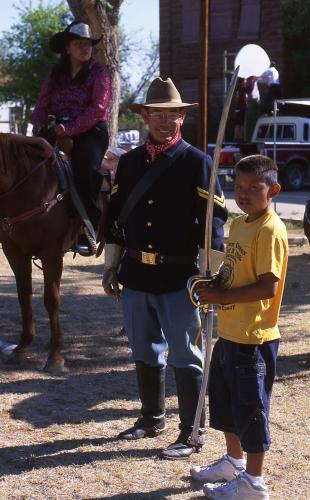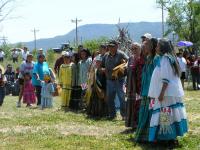By Lena Mortensen, Dave Schaepe, and Kristen Dobbin
In our rapidly globalizing world, partaking in cultural tourism is an opportunity that many of us take for granted. Often as tourists we seek to experience the ‘authentic’ and in the process we snap photographs, we participate in rituals and festivals, we eat traditional foods, and we take home souvenirs.
 From a visitor perspective, such activities are typically desirable, expected, and unproblematic. But what issues do these tourism practices raise for host communities?
From a visitor perspective, such activities are typically desirable, expected, and unproblematic. But what issues do these tourism practices raise for host communities?
Led by co-chairs Lena Mortensen, an anthropologist based at the University of Toronto, and Dave Schaepe, Director and Senior Archaeologist in the Stó:lo Research and Resource Management Centre, the Cultural Tourism Working Group (CTWG) has been exploring the range of intellectual property issues that emerge from cultural and heritage tourism contexts.
In the first three years of the project, IPinCH working groups gathered resources, discussed research questions, and generated ideas on a variety of topics, policies, concepts and theories. During this period, the CTWG analyzed intellectual property dimensions of some of the many charters and protocols created by international organizations, national bodies, and community and Indigenous groups to guide the practices of tourists and tourism operators. The group also examined a range of Indigenous and community-based tourism initiatives in Canada, including many partner communities affiliated with IPinCH. The group has also compiled bibliographies of academic literature related to intellectual property and cultural tourism. This research was added to IPinCH’s Knowledge Base, the project’s resource database, for other team members to access.
In the second phase of IPinCH, working groups are shifting to analysis and the preparation of publications. With the momentum of the 2011 IPinCH Midterm Conference at our backs, the CTWG has turned its attention towards producing more tangible resources and publications from the project’s research efforts.
Currently, we are developing an IPinCH-oriented reader as a resource for cultural and other tourism-related courses. Drawing on the expertise of CTWG members, the reader will include articles, excerpts and other resources that emphasize sustainable tourism and are sensitive to intellectual property issues and concerns as they inform contemporary tourism contexts.
The group is also compiling and analyzing protocols created by communities for tourists to their sites. Using a range of sources, from tribal websites to comments on TripAdvisor, we plan to publish a paper that addresses the role and efficacy of protocols made for tourists, in order to understand whether and in what ways they offer communities a means to navigate intellectual property concerns and maintain culturally appropriate practices, while at the same time fostering education and cross-cultural understanding.
One of the tasks of the Working Groups is to draw on the material generated by the Case Studies for discussion, comparison, and theoretical analysis. The CTWG is now coordinating and contributing to a publication that addresses parallel issues raised in two IPinCH Case Studies: the Ngaut Ngaut Interpretive Project based in Australia and the Education, Protection and Management of Ezhibiigaadek Asin (Sanilac Petroglyph Site) Project based in Michigan, U.S.A.
Finally, the group is organizing a session on intellectual property and cultural tourism for the Stó:l? People of the River Conference, to be held by the Stó:lo Nation in Chilliwack, British Columbia from May 31 to June 2, 2013.
There are many others on the IPinCH team that are engaged with issues related to cultural tourism and the CTWG has benefitted tremendously from the enthusiasm of our group of contributors.
Photos: The Apache Heritage Reunion event is held the second weekend of May each year at Fort Apache and Theodore Roosevelt School National Historic Landmark. The event draws many visitors to the site. Photos: J.R. Welch, Courtesy of White Mountain Apache Heritage Program.






